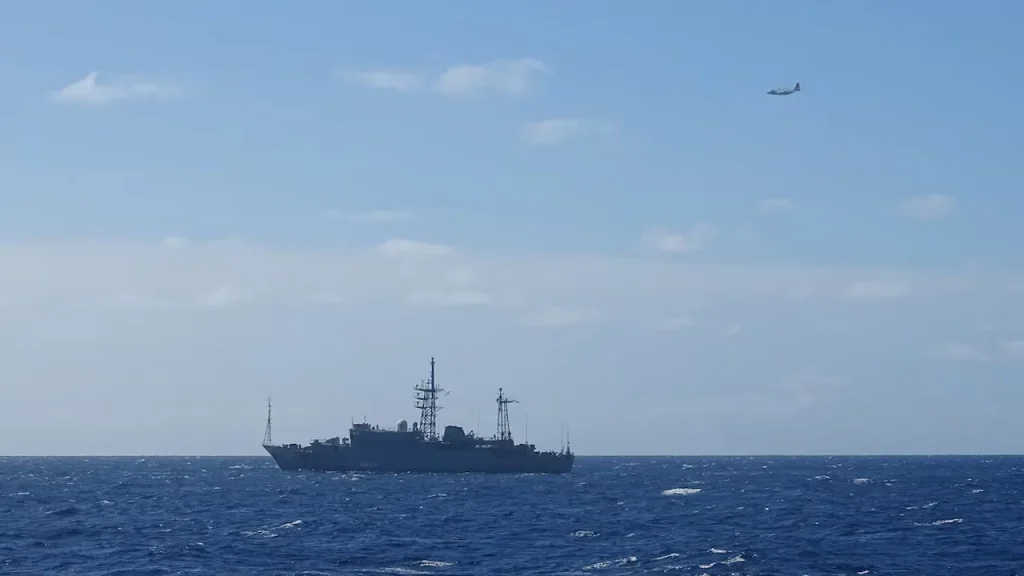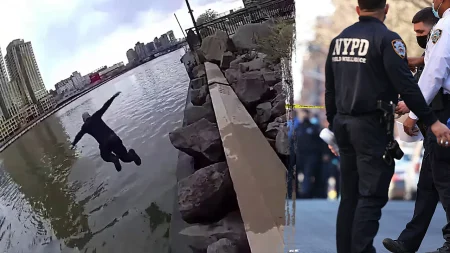Russian Spy Ship Detected Near Hawaii: Coast Guard Monitoring Operations
In a significant maritime security development, the U.S. Coast Guard announced Thursday that it had detected a Russian military intelligence vessel operating near Hawaiian waters on October 29. The Vishnya-class intelligence ship Kareliya was spotted approximately 15 nautical miles south of Oahu, prompting an immediate response from American forces. This incident highlights the ongoing vigilance required to protect U.S. territorial waters and the delicate dance of international maritime law that governs such encounters.
Upon detection, the Coast Guard deployed an HC-130 Hercules aircraft from Air Station Barbers Point and dispatched the Coast Guard Cutter William Hart to the area. Officials emphasized that their response consisted of “safe and professional” overflights and transit near the vessel, reflecting the careful protocols that govern such potentially sensitive international encounters. Captain Matthew Chong, chief of response for the Coast Guard Oceania District, stated that such monitoring is routine, noting that the Coast Guard “regularly monitors maritime activity around the Hawaiian Islands and throughout the Pacific to ensure the safety and security of U.S. waters.” This measured response demonstrates how American forces must balance assertiveness with diplomatic prudence when confronting foreign military vessels operating near U.S. shores.
The vessel in question, the Kareliya, belongs to a specialized class of ships with a storied Cold War legacy. Vishnya-class vessels were built for the Soviet Navy in the 1980s specifically for signals intelligence gathering. According to U.S. Army information, only seven of these sophisticated vessels remain in service with the Russian Navy today. These ships are equipped with extensive sensor arrays designed to collect electronic intelligence, which can be transmitted back to Russian command centers via satellite link antennas. While primarily designed for intelligence gathering rather than combat, these vessels aren’t defenseless – they carry AK-630 close-in weapon systems and SA-N-8 surface-to-air missile launchers for self-protection. The presence of such a specialized intelligence-gathering platform near Hawaii raises natural security concerns for U.S. defense officials.
The Coast Guard’s monitoring operation illustrates the complex web of international maritime law that governs such encounters. Under customary international law, foreign military vessels are permitted to transit and operate in waters beyond another nation’s territorial seas, which extend 12 nautical miles from shore. In this case, the Russian vessel was positioned just outside this boundary at approximately 15 nautical miles from Oahu, technically operating within its legal rights while still close enough to potentially gather sensitive information. The Coast Guard Oceania District works in conjunction with U.S. Indo-Pacific Command and various interagency partners to constantly monitor such foreign military vessel activity near U.S. territorial waters, balancing respect for international maritime law with the imperative to protect American security interests.
This incident occurs against the backdrop of broader geopolitical tensions and increased Russian naval activity worldwide. In recent years, Russian naval and intelligence vessels have been detected operating near critical U.S. infrastructure, including underwater cables and military installations. The timing of this particular operation – coming amid complex global security situations in Ukraine, the Middle East, and growing tensions in the Asia-Pacific region – adds another layer of significance to the encounter. While the Coast Guard characterized their response as routine, the presence of a Russian intelligence vessel so close to a major U.S. military hub in the Pacific inevitably raises questions about Russian intentions and intelligence-gathering priorities in the region.
For residents of Hawaii and the broader American public, this incident serves as a reminder of the unseen security operations that continuously unfold to protect U.S. interests. While everyday life continues normally on the shores of Oahu, specialized Coast Guard and military personnel work diligently to monitor foreign vessels that approach American waters. The professional response to the Kareliya demonstrates the sophisticated procedures in place to address such situations without escalation while still protecting sovereign interests. As Captain Chong noted, these efforts involve “working in concert with partners and allies” to ensure comprehensive monitoring and appropriate responses to foreign military activity near U.S. borders. This incident, while not representing an immediate crisis, illustrates the persistent vigilance required in maritime security and the ongoing game of naval positioning that continues to play out across the world’s oceans.










